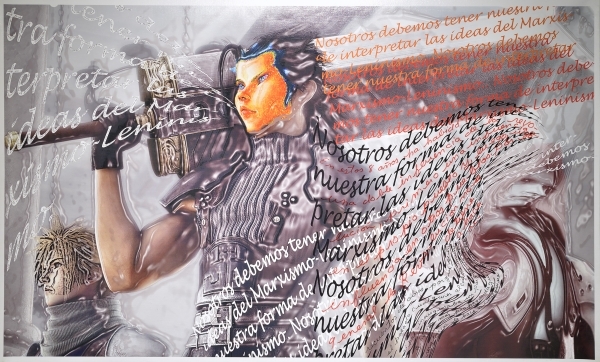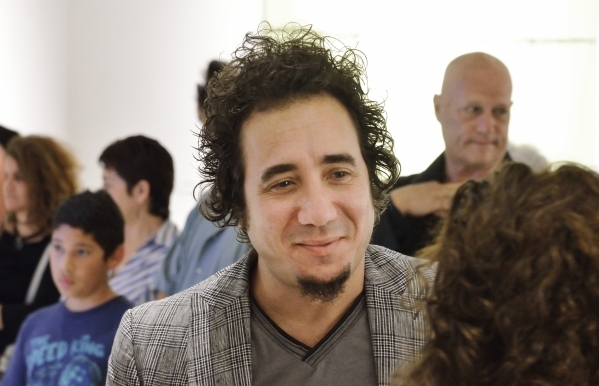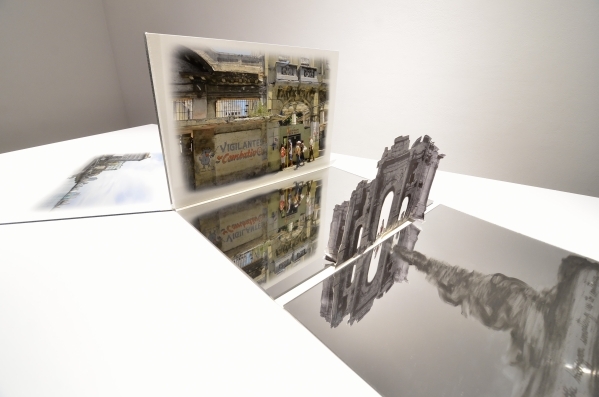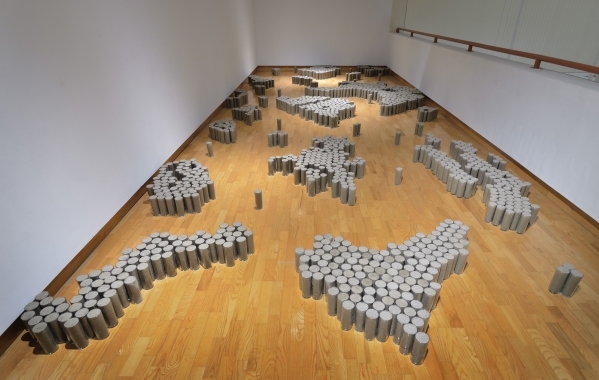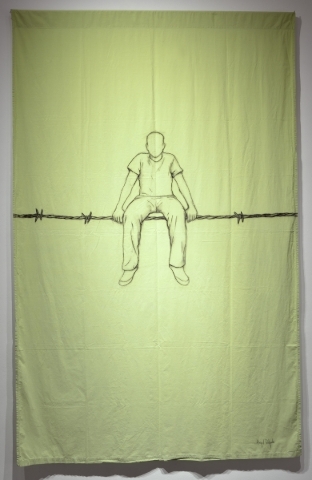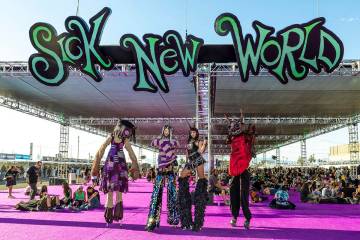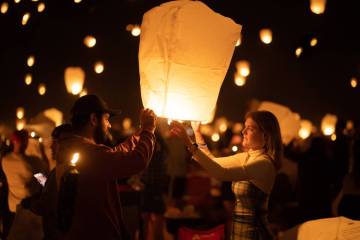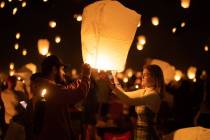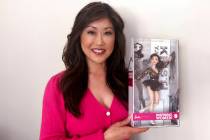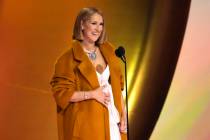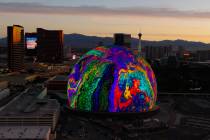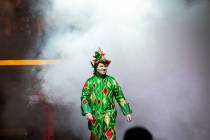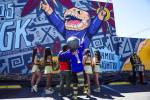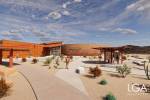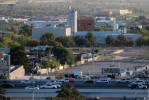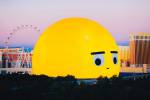UNLV exhibit showcases Cuban artists who endured political repression — PHOTOS
Many artists suffer for their art — but not from behind bars.
Angel Delgado understands the latter reality all too well.
The currently on display at UNLV's Donna Beam Fine Art Gallery — show the scars of the six months he spent in jail in his native Cuba following a performance piece the authorities didn't like.hasn't lived in Cuba for a decade. (He moved here two years ago, following eight years in Mexico.)
But his artworks — currently on display at UNLV's Donna Beam Fine Art Gallery — show the scars of the six months he spent in jail in his native Cuba following a performance piece the authorities didn't like.
In Delgado's view, "us Cubans are born and raised with fear — it's in our blood," he said, through an interpreter, in an opening-night discussion for "Through Windows, Through Curtains, Call on Us: Contemporary Cuban Art," which continues through Nov. 14.
"When we have reason, we realize there's a lot we're not allowed to do," he commented. "As you're growing up, you realize it's not right." Yet for artists, "the fear isn't really fear — it's encouragement, in a way."
So even his jail time provided artistic inspiration.
In one of Delgado's "Dreamt Reflections," executed on bed sheets, a faceless man perches on a stretch of barbed wire. His "Pull the Chain" series features doorknobs and peepholes mounted on white toilet seat lids. And peepholes provide the only view in, or out, of four white doors that form a cell-like booth on the gallery floor.
Artist Sandra Ramos' works range from mirrored surfaces reflecting different visions of existence ("The Utopia Ruins") to a video installation featuring cartoon versions of Uncle Sam, Vladimir Lenin and Fidel Castro trying to lasso a crocodile that morphs into the shape of Cuba.
Sandra Ceballos' paintings depict warrior women brandishing weapons; in "Fantasy and Assembly," words surround the central figure, including a reference to "nuestra forma de interpretar las ideas del marxismo-leninismo" — "our way of interpreting the ideas of Marxism-Leninism."
And Ariel Orozco's "Cuba Libre" — which stretches across the gallery's balcony — presents several thousand cocktail glasses, grouped to evoke geographical features on a map. Rather than being filled with liquor, however, Orozco's Cuba Libre glasses contain desert sand.
Overall, the exhibit "gives us a bitter taste into what it is like to be Cuban, into the courageous endurance of a people, and of the uncertain process of becoming a sovereign nation in a deeply divided world," Gustavo Larach writes in the catalog for "Through Windows, Through Curtains, Call on Us."
It's the first Cuban art exhibit in Las Vegas, to the knowledge of curator Robert Tracy, a UNLV art history professor.
The idea for the show took shape after President Barack Obama called for a thawing of relations between the U.S. and Communist Cuba after more than 50 years.
"The curtains have been pulled back," Tracy notes. And even though "there are only 90 miles separating the U.S. and Cuba, those 90 miles (represent) quite a distance. Now, it's been bridged."
Co-curator Emmanuel Ortega, an adjunct professor at UNLV, called the Cuban art exhibit "an unprecedented event. For us, it's historic."
Ramos, who divides her time between Miami and Havana, attended the exhibit's opening; Ceballos, who lives in Cuba, and Orozco, now living in Mexico, had "visa problems," Ortega said, and were unable to travel to Las Vegas.
"It has always been a very complicated relationship" between Cuban artists and authorities, Ramos explained during the opening-night discussion. "Artists have learned how to deal and talk about subjects — in a free way."
For Cuban artists of the 1980s, "it was a generation that expressed itself with critical art," Delgado observed. "After the '80s, there was more censoring of art and artists. Some of us were harshly censored."
Added Ramos, "there's always this dynamic between the official government and artists. There's always this push back and forth between the government and artistic forces."
Institutions outside of Cuba have played a role in supporting Cuban artists, Ramos noted.
"Exhibiting outside Cuba is nothing new," she said. "It's important for artists to know and understand that they have this support."
All four artists featured in "Through Windows, Through Curtains, Call on Us" have exhibited around the globe — from Miami and Mexico City to New York and New Orleans, London and Rome to Istanbul and Tokyo.
And now Las Vegans have the chance to experience their works — and ponder the pressures the artists have faced in creating them.
After Cuban officials reprimanded and imprisoned Delgado, "then I was scared," he acknowledged. But "I'm not afraid anymore. I'm out of Cuba."
— Read more from Carol Cling at reviewjournal.com. Contact her at ccling@reviewjournal.com and follow @CarolSCling on Twitter.
Like Neon Las Vegas on Facebook:



